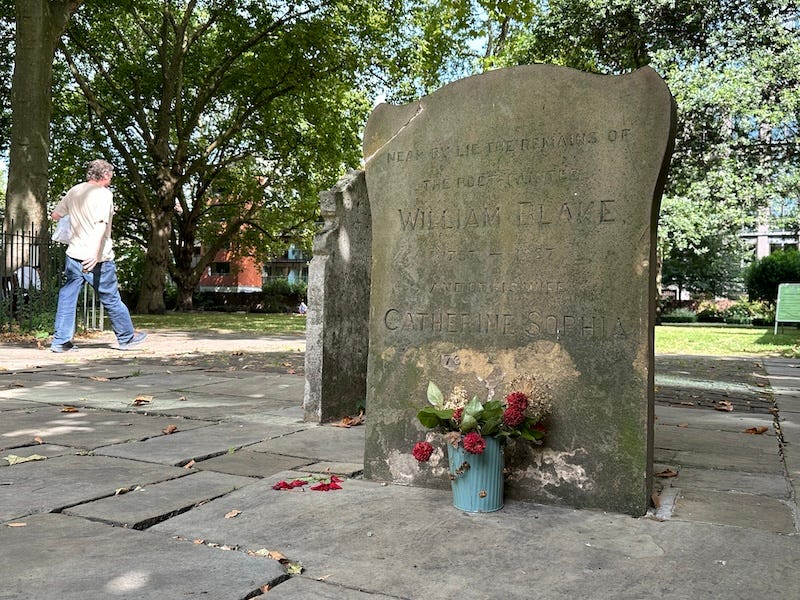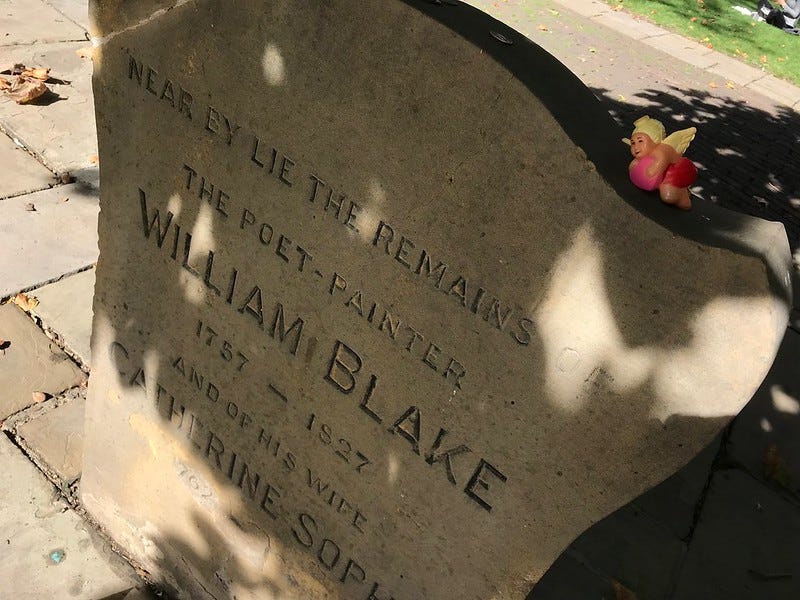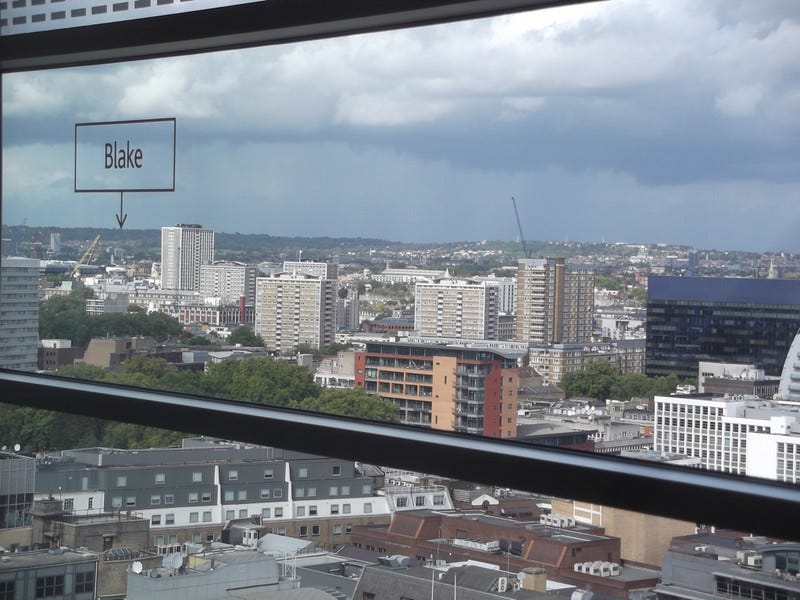Welcome to Londonist: Time Machine’s Friday edition for paying subscribers (with a generous teaser for everyone else).
I’ve gone a whole 14 months on this newsletter without once mentioning William Blake. Deeply negligent of me, I know. So in today’s article, I pay a visit to his two graves in Bunhill Fields.
That’s for the main feature. First, the History Radar of upcoming events for London historians.
History Radar
🫁 PATHOLOGY MUSEUM: 21 August offers a rare chance to get a look inside Bart’s Pathology Museum, an historic collection of anatomical specimens housed with St Bartholomew’s Hospital in Smithfield.
🍻 NAUGHTY VICTORIANS: For good reason the Victorians are often decribed using words like "repressed", "moralistic" and "prudish." But they also had their vices, such as drink, sex and gambling. The London Archives holds a session on 22 August looking through its records at this seedier side of Victorian life.
🥩 SMITHFIELD MARKET WALK: On 23 August, join a guide from the London Museum for a guided walk around Smithfield -- the area that the museum will call home when it reopens. Hear about medieval and Tudor history, and visit landmarks including the Charterhouse, St Bartholomew-the-Great church, and the meat market.
🍫 HISTORIC CHOCOLATE SOIREE: Stay late at the Old Royal Naval College in Greenwich on 23 August for Grace Tosier's Chocolate Soiree, an evening of events inspired by local 18th century chocolate maker Grace Tosier. Your ticket includes out-of-hours access to the Painted Hall, entry to the current Chocolate House Greenwich exhibition, a chance to take part in a Baroque-themed dance with professional dancers, and a Q&A with an historical interpreter from History Riot portraying Grace Tosier -- as well as plenty of chocolate-themed treats.
🔧 BEAM ENGINE: Ever been to see Markfield Beam Engine? 25 August is a chance to see this wonderfully ornate piece of Victorian kit, originally built to pump sewage from Tottenham down to Beckton. The site includes an adjoining museum, cafe and playground.
🎨 BLACK HISTORY TOUR: Also on 25 August, join Black History Walks for a tour of the Wallace Collection in Marylebone, focusing on the often-hidden Black presence in the gallery's collections, including works depicting musicians, princesses, slaves, servants and saints.
Can you help? Londonist: Time Machine carries no advertising and relies on reader generosity to keep going. If you like what we do, and are able, please consider becoming a paying subscriber. For less than the price of a pint a month, you’ll help support our work, receive bonus newsletters, get full access to the archives, and get occasional invitations to site visits and drinks meet-ups (including one in September, which I’ll announce next week). And please do spread the word to history-minded friends. Thank you so much!
William Blake Has Two Graves
I think Karl Marx just about pips him, but William Blake has one of the most famous graves in London. Here is that grave, which he shares with wife Catherine and, on this visit, a small plastic love angel:
The much-visited grave in Bunhill Fields is so famous that a nearby office block, 30 Crown Place, has a directional arrow on the window of its meeting room, so that all the staff may know where to find him:
Thousands of people find his grave each year. Many leave tokens of appreciation and respect, such as the angel shown above — perhaps a reference to Blake’s vision of angels on Peckham Rye. I’ve also clocked coins, flowers, a lantern, poetry and a spliff, left in deference to the great painter, poet and visionary. There’s always something.

London’s patron saint is usually reckoned to be St Paul or, if you’re joining us from the early medieval period, Earconwald. We have international, marketable figureheads in the shape of Dickens, Victoria and Shakespeare. But Blake is the genius loci. His mystical paintings and prints, words and patterns are suspended in colloid with the city. The Blakeian spirit suffuses each chartered street. It blossoms in a panicle of culture that reaches into every quarter. The polymath haunts the southern end of Blackfriars Bridge, the railway arches of Lambeth, the fearful symmetry of Soho, the fields of Peckham Rye, the nooks of Euston Road… Hang around in London for long enough, and Blake will find you.
Nowhere is his memory more powerful than in Bunhill Fields, that strange necrocopia of non-conformism on City Road. It is a charmed plot, sandwiched between the world centre of Methodism and the resting place of leading Quakers. To the north is the ancient well of St Agnes, now called Old Street tube station; and to the south is the Honourable Artillery Company grounds, which witnessed the first ever human flight from British soil. Truly, this is a portal to the heavens, and the only place where a man such as Blake could be buried.
But look again at the tombstone. The dedication opens not with a “Here lies”, but with a “Near by”. Blake and his beloved are not buried on this precise spot. It is a token tombstone for lost remains. Nobody knows where the real bones rest.
Or, at least, they didn’t.






